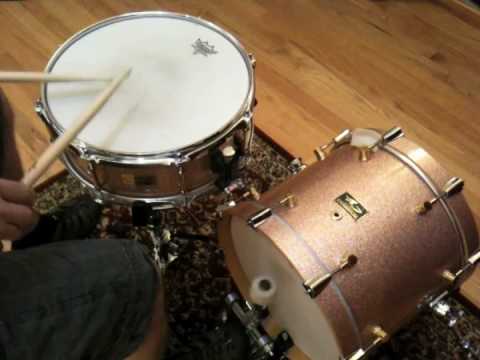Originally called magnetic core memory, solid state drives are an alternative to hard disk drives. They have less moving parts and are shock-resistant. They also have low power requirements and can lower your electric bill.
They are made up of several components, including a controller chip that manages the information on the host computer. They contain memory chips that contain millions of electrons in a specific order.
SSDs have come a long way since the early days of the first solid state drives. They are now able to offer tons of storage space at a fraction of the size of HDDs. These drives are now more reliable, shock-resistant, and faster.
SSDs come in three basic types of memory: single-level cells (SLC), multi-level cells (MLC), and triple-level cells (TLC). The single-level cell is the fastest, most durable, and least expensive SSD type. The other two memory types offer a slower write speed and lower capacity.
They’re designed to be interchangeable with HDDs. They come in varying sizes, with the 2.5-inch model being the most common.
In the early days, the cost of a solid state drive was prohibitive. However, these devices have become more affordable over the years. They are now available in a wide range of sizes, configurations, and prices. These devices can also improve system cooling, make your computer more reliable, and save you time and money in the long run.
SSDs can be useful for high-throughput tasks. They offer better reliability and lower power consumption, which can lower your electric bill. They are also compatible with almost any device.
They’re also less likely to suffer data loss when your mobile device is dropped. Because they’re shock-resistant, they’re better suited for portable electronics.
Basically, a motherboard is the central backbone of a computer. It connects all the hardware parts of a computer and helps distribute power to all the devices. It also acts as a jack-of-all-trades for a computer, providing ports, sockets and connectors for various peripheral devices.
The motherboard is usually connected to a power supply and contains ports for peripheral devices. These devices may be attached to the motherboard using plug-in cards or cables. It also has a peripheral card slot to enable the insertion of expansion cards. It can also support other functions such as network cards and wireless network adapters.
The motherboard also has a clock generator, which synchronizes the computer’s operations. It also has a built-in temperature sensor, which monitors the CPU temperature. It also has a USB port, which allows the user to plug in and unplug compatible devices.
The motherboard also has a built-in Basic Input Output System (BIOS) software. The BIO is a small memory chip that stores instructions for the computer’s basic functions. It also controls the fan speed and other settings.
The motherboard also has an integrated disk drive controller, which controls the flow of information from the drive to the motherboard. It also has ports for other types of devices, including floppy disk drives and optical drives.
The motherboard also has a ROM memory, which stores the instructions for starting the computer. It also has a built-in microprocessor, which is the brain of the computer. The CPU processes software instructions and communicates with other parts of the computer.
A motherboard also has a special port for the power supply. A motherboard may also have ports for a number of peripheral devices, such as video cards, sound cards, fans and temperature sensors.
To Get GamesOptical discs are electronic storage mediums that allow the computer to read and write data. They are most commonly used to store digital video and music. They are available in a variety of formats. Some are read-only while others can be recorded.
Optical discs are generally between three and twelve centimeters in diameter. They have a reflective coating and a clear polycarbonate layer that allows the laser beam to pass through. Discs should be stored in dry conditions and at temperatures between ten and twenty-three degrees Celsius.
The first optical disk was developed by James T. Russell in the late 1960s. It was a sheet of material that was covered with microscopic data pits. The pits were etched into the reflective layer of the recording material.
In addition to storing data, optical discs are also used to store analog video signals. The LaserDisc format, developed in 1972, was the first optical disk to store digital video. Unfortunately, the format was very expensive and did not take off. Eventually, it was replaced by the VHSvideocassette format.
Optical discs are also used to store digital audio. In these formats, the data is stored in microscopic data pits that are etched into the reflective layer of the recording medium.
The reflective layer typically consists of aluminum foil, but sometimes it is polycarbonate. The metal alloy recording layer is usually sputtered before the recording layer. Rewritable optical discs usually contain a phase-change material that allows for multiple rewrites.
Optical discs come in three formats. They are CD, DVD and BD-R. They can store between 700MB and 10GB. DVDs were introduced in 1997. It was intended as a replacement for the VHS format.
Whether you are building a new computer or looking to upgrade your existing one, it is important to know what the hardware is of your computer. Some of the hardware of a computer include the CPU, monitor, RAM, hard disk and mouse. Each of these components is necessary for the operation of the computer.
Among all the electronic components in a computer, the CPU is the most important one. This device receives instructions from the operating system and executes them accordingly. The CPU also performs some calculations on the input received.
A CPU can execute millions of instructions per second. It is also referred to as the brain of a digital system. It can perform complicated arithmetic calculations or move numbers around in memory.
CPUs are usually small devices. They are built by placing billions of microscopic transistors on a single chip. These transistors control the flow of electricity through the integrated circuits. They allow the CPU to store and run programs from memory.











